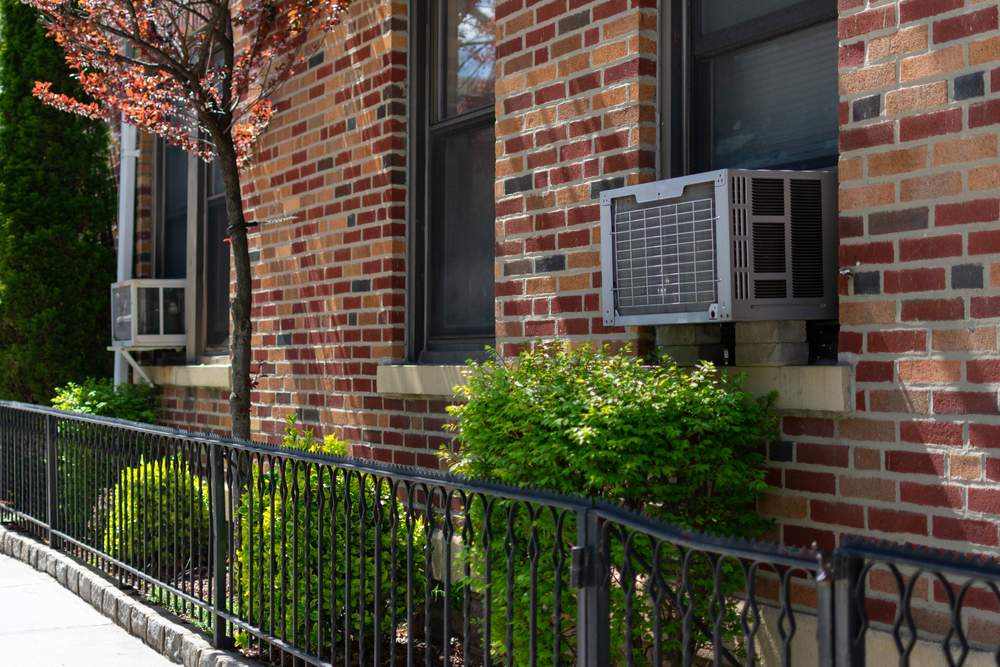Cooling isn’t just about comfort — it’s about life and death. As our summers get hotter, we’ll see more of the preventable death and sickness wrought by extreme heat unless access to cooling expands. And yet, the cooling assistance benefit in New York State’s Home Energy Assistance Program (HEAP), which offers funds toward the cost of an air conditioner for eligible low-income New Yorkers, just ran out of money for the third summer in a row.
We must reform this program so it can help those who don’t have access to cooling. We’re calling on the state and federal governments to help low-income New Yorkers afford cooling so they can be healthy and safe in their homes.
Heat kills more people in New York City than all other climate threats combined, with 350 heat-related deaths on average each year. Those who die are more likely to suffer from preexisting conditions exacerbated by heat, like heart disease, a history of respiratory conditions, and diabetes.
Air conditioning access in New York City is generally high, but as reported in Environmental Justice NYC, the city’s first environmental justice study, in some low-income communities of color, almost 25% of households lack access to cooling. I get it — I grew up in Brooklyn without an air conditioner.
As a city, we’re hard at work combatting this threat. We planted close to 18,000 trees in the last fiscal year, we’re investing more than a billion dollars in pools across the city; we’re decarbonizing buildings under the Climate Mobilization Act — which will increase energy-efficient heat pumps that also provide cooling; and we’re working toward a maximum indoor temperature policy to ensure all New Yorkers are protected from dangerously high temperatures at home.
We’re building cooler streets and public spaces, and we’re launching the city’s first urban forest plan to cover at least 30% of the five boroughs with tree canopies.
The federal Low-Income Home Energy Assistance Program (LIHEAP) distributes money to states and allows them to allocate it as they see fit to help low-income residents with energy and utility costs. It was created in response to rising energy prices in the 1970s, when the focus was helping low-income Northeasterners stay warm through bone-chilling winters. But the temperature increases of the last several decades have changed the landscape.
While LIHEAP has been a lifeline for keeping homes warm in the winter, cities across the Northeast haven’t received enough money from state programs to meet the demand for ACs or to offer what New York City has advocated for: a utility subsidy to help cover the monthly cost of cooling for low-income New Yorkers. In the last fiscal year, federal funding for LIHEAP was $4.1 billion, down from $6.1 billion the previous year. That resulted in an allocation of just $395 million for New York State, a reduction of nearly 30%.
Due to a combination of factors that include increased heat, economic insecurity brought on by COVID, expanded eligibility due in part to city advocacy, or a new online application Mayor Adams implemented in 2022, applications for cooling assistance have jumped dramatically. This year, even though Gov. Hochul committed an additional $5 million, up from $17 million, the funding isn’t meeting the clear need, and the program still needs more money.
Only low-income New Yorkers with documented health conditions exacerbated by heat, or New Yorkers over 60 or under 6, can receive LIHEAP cooling benefits. Low-income New Yorkers who have air conditioners are likely to use them less because they can’t afford to pay their utility bills.
Energy cost burden — when you pay more than 6% of your pre-tax income on energy bills — is an increasing problem and a barrier to cooling for many low-income New Yorkers. That’s why with sufficient federal funding, New York State could establish a summer utility benefit and waive the medical requirement so eligibility is solely income-based. No one should have to die inside their own home because of energy costs.
Extreme heat isn’t going away. Scientists project that by the 2030s, less than six years from now, there could be up to three times as many days above 90 degrees as in recent memory. With those hotter days right around the corner, around 650,000 families across the city, more than 500,000 of which are low-income, are currently energy cost burdened, with mostly Black or Hispanic/Latino neighborhoods experiencing the highest rates.
As a New Yorker who has lived his entire life in an environmental justice community, I know cooling reform cannot come a moment too soon.
Hutchinson is executive director of the Mayor’s Office of Climate & Environmental Justice.
